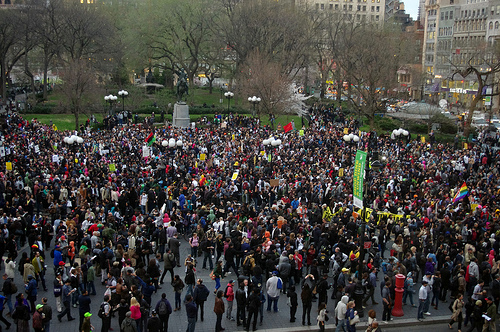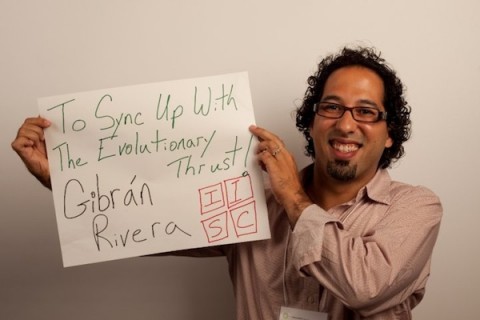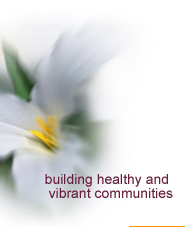Tag Archive: relationship
March 26, 2014

Over the last few weeks I have fielded a number of calls from people who are interested in figuring out how to develop different kinds of networks. I’m always eager to have these conversations, precisely because there is no single right answer, and it really comes down to a process of discovery and experimentation based on the unique nature of the network and system in question. That said, I do like to ask people the question, “What are you doing to feed your network?” Read More
August 14, 2013

|Image from Lefteris Heretakis|http://www.flickr.com/photos/95935106@N00/3665497225/in/photolist-6zUCC2-6BpvKw-6GGt4g-6GGXZc-6GGYot-6GHhqz-6GHp7H-6GHpp4-6GHqMH-6GLRUo-6GM1BA-6GMkcC-6GMrR7-6GMsPL-6GMtfG-6GMuoE-6TQXh7-6TQYpj-7bbit4-7bbkSv-7bbne6-7bf7K5-cBB2DY-edAhP2-cf78xW-cBAZTs-cBB4id-cBB5wU-9Nzeot-9NC3F5-eNPtU8-dnk5ox-dw5A4n-f7FkSo-a62gzE-9sPsft-b34pnk-dw5Buk-8bqEKN-8bqEMy-8bnotB-8bnowM-8bnoux-8bqEqN-8bnojc-8bqEyf-bG7p8c-8bqEAY-8bnovv-8bqEty-8bnocX|
Last week I had the opportunity to participate in a gathering, convened by the Garfield Foundation, of “network building” practitioners interested in advancing this field for the sake of making more progress around fundamental social change, including greater social equity and sustainable communities. The launch point for our discussions was the successful RE-AMP network that Garfield has supported for several years now in the midwestern United States. We began by looking at a framework for change that has emerged from RE-AMP’s experience, while acknowledging that this is a data point of one. From here we talked about what we are all learning in our respective experiences, and perhaps more importantly, what we do not know. There were several themes that I heard emerging in our conversations, and I wanted to highlight one in this post, which is reflected in the title – how we begin and bound our efforts matters. Read More
August 7, 2013

At IISC we like to define the success of collaborative change efforts in multi-dimensional ways. In particular, we make reference to results, process, and relationship elements. Results are what we typically think of as the “measurable” outcomes of a change undertaking – policy change, livable wage, job creation, healthier communities, etc. Process has everything to do with the how of the work – how we approach our change efforts, the steps we take, how work is shared and by whom, and with what spirit. Relationship is about both the quality of interpersonal connections as well as how people relate to the work itself. From what one might call an “old school” mindset, there is an assumption that process and relationship are only important insofar as they help to achieve results. Read More
July 31, 2013
“Thinking in terms of networks can enable us see with new eyes.”
– Harold Jarche

Photo by David Shankbone
The biological sciences have revealed that all living things in an ecosystem are interconnected through networks of relationship; that is, they literally depend upon a web of life to survive and to thrive. On the social science front, we are also beginning to appreciate that groups, organizations, and communities depend upon and function in distributed networks of relationship that go beyond contrived boundaries, formal roles, communications, or decision-making protocols. After all, we are a part of life! Read More
December 27, 2012

IISC would like to share our Top 5 most influential post of 2012! Join us until the New Years Eve when we reveal our number 1 blog post!
The following post began as a response to FSG’s lastest contribution to its work around “collective impact” on the Standford Social Innovations Review blog. There is much value in the additional details of this cross-sectoral approach to creating change, and I especially appreciate what is highlighted in this most recent piece regarding the strengths and weaknesses of different kinds of “backbone organizations” to support and steer the work. In the ensuing conversation on the SSIR blog, there is a comment from an FSG staff person about the importance of building trust in launching these efforts, and it was from this point that I picked up . . .
With deep appreciation for the good work of FSG in helping to codify this important approach, I wanted to add that from our experience at the Interaction Institute for Social Change, helping people develop the skills of process design and facilitation is of paramount importance in cultivating trust and ultimately realizing the promise of large-scale multi-stakeholder collaborative efforts. Read More
May 31, 2012
If you don’t know the kind of person I am
and I don’t know the kind of person you are
a pattern that others made may prevail in the world
and following the wrong god home we may miss our star.
–William Stafford, from “A Ritual to Read to One Another”
![Able Martinez Volunteer Docent Guide Piedras Blancas Lightstatio Photogenic Able Martinez Volunteer Docent Guide - loves his work and it shows. Piedras Blancas Lightstation Lighthouse, San Simeon, CA. Public tour 18 Feb 2009. Led by docent volunteers Able and Toni Martinez (abellighthouse {at] charter d o t net. Photo by Michael](https://interactioninstitute.org/wp-content/uploads/2012/05/storyteller3-480x319.jpg)
|Photo of Able Martinez by Mike Baird|http://www.flickr.com/photos/mikebaird/4369050515|
This is a slightly edited re-post of something I wrote a couple of years ago, and it came back to mind during conversations these past few days with a group of conservation biologists about how to create more of a compelling case for their work, and also to better understand where various stakeholders (allies and adversaries) are coming from with respect to preserving precious natural resources. The point has been made several times and in different ways that narrative speaks louder than numbers, and that in our change work, it helps if we become acquainted with the stories of others, and work ultimately at weaving ourselves into something more collective. Read More
May 4, 2012

I am so proud of my colleague, Gibran Rivera, for the due recognition that he has received lately in various quarters for his deep thinking and transformative work. And I am grateful for how eloquently he captures the nature and intention of our collective work the Interaction Institute for Social Change in a recent interview:
“IISC seeks to make the invisible visible. When we are successful, people find themselves working in ways that are life-giving, generative, and unlike most of their experiences of working together. We achieve this by paying close attention to process. Process works best when everyone knows what it is and where we are [in] it. But process is not enough. We seek to create spaces and conditions that foster connectivity at the level of authentic relationship. When we are working in authentic relationship with one another, when we learn to connect to each other in the place where our shared purpose meets, then it can feel like the work is happening all by itself. But these spaces have to be designed; they have to be held and they have to be tended to. This is where we come in. And this is how interconnectedness becomes palpable.”
August 25, 2011

|Photo by Shykh Seraj|http://www.flickr.com/photos/51937229@N05/5648441691|
Perhaps feeling wistful in these late summer weeks as we lean towards fall, I seem to have a penchant for all things poetic. Who better to read then, than my friend and colleague Danny Martin, who blogs at a site entitled, “The Art of Working WITH Life.” Danny wonderfully and naturally spouts poetry, his own and others’, as he reflects on what it means to live and lead sustainably. In a recent post on relationships, he writes, “sustainability is about learning to work with differences in a way that will allow us to address the challenges of everyday living and also thereby deepen the relationship with the world we live in.” In other words, it is about learning to love, or as Humberto Maturana has defined it, “respecting the other as a legitimate other.” I have noted that the whole notion of love resonates more and more deeply with people in leadership trainings. The mention of the word does not lead to the same kinds of winces, embarrassed grins, and occasional rolling of the eyes as it did even 3 years ago. What’s love got to do with it? “Everything!” a couple of people shouted in my most recent training in Connecticut. As we discuss it, we revolve around the many different splendors and interpretations, but at the end of the day most everyone agrees that while it may be difficult to define love, we know when it’s absent. And we know we suffer for its loss.
So with thanks to Danny for drawing my attention to them, I pass along these poetic ponderings of Czeslow Milosz, and invite you to consider the link between love and sustainability: Read More
July 14, 2011
“Tension and transparency of tension create capacity.”
-Mistinguette Smith

|Photo by ideowl|http://www.flickr.com/photos/ideowl/3737550476|
Last week I blogged from Knoll Farm in Fayson, VT, where I was serving as a co-trainer of our Whole Measures workshop, which we offer in partnership with the Center for Whole Communities. In that post I reflected on the connection that the Knoll Farm site creates between people, and between people and land. A remarkable aspect of the Farm is its intentional design, in that its human-made elements naturally work with and build upon the contours of the landscape and draw people’s attention to certain dynamics that reflect essential truths. An example is the large yurt, that sits on an outcropping at the end of an old logging road. It is a welcome (and welcoming) sight as one rounds the bend having climbed a fairly long steep incline. Its brown and green colors integrate nicely with the forested landscape, and its very structure invites one into contemplation about the life that surrounds it and with which it is in relationship. Read More
December 6, 2010

My friends at the Engage Network recently asked me this provocative question:
What does it mean to create social change that is “human sized” and prioritizes people and relationships, rather than prioritizing large email lists, or campaigns, or raising money? What does that mean to you and YOUR work in the world?
Here is my first take at an answer: Read More
October 28, 2010
 What do you look for up front to suggest that a collaborative endeavor is on the right track? This is the question that former IISC colleague and current VP of Programs at Grantmakers for Effective Organizations, Courtney Bourns, and I are charged with answering today. Our audience and partners in this endeavor are a group of community grantmaking committee members convened by the Ontario Trillium Foundation. The attendees want to know what to look for in applications and out in the field (‘beyond the grant”) as hints of future success.
What do you look for up front to suggest that a collaborative endeavor is on the right track? This is the question that former IISC colleague and current VP of Programs at Grantmakers for Effective Organizations, Courtney Bourns, and I are charged with answering today. Our audience and partners in this endeavor are a group of community grantmaking committee members convened by the Ontario Trillium Foundation. The attendees want to know what to look for in applications and out in the field (‘beyond the grant”) as hints of future success.
This is an intriguing and challenging question, especially given the fact that the signs of success are often in places we do not think to look and of course there are never any guarantees. I certainly look forward to an engaging conversation with this group, and these are the thoughts I am prepared to share with folk at this point: Read More
September 23, 2010

|Photo by Coach Cassandra Rae|http://www.flickr.com/photos/cassandrarae/4494566573|
“The process of coming to terms with vulnerability is one that necessarily shifts a person’s values focus to one that emphasizes self-transformation and interdependence.”
-Greg Jemsek
The word “vulnerability” seems to be up in many parts of my life. On the home front, there is a lot of discussion about vulnerability as being key to building stronger relationships with my wife and daughters. What this generally means is being more in touch with feelings of not being in control, of concern for those most dear to me, and of desiring greater closeness. At times I seem to be good at ignoring these either because I perceive them as painful or inconvenient, and subsequently create a buffer to my ultimate aim which is depth and richness of connection. Read More





![Able Martinez Volunteer Docent Guide Piedras Blancas Lightstatio Photogenic Able Martinez Volunteer Docent Guide - loves his work and it shows. Piedras Blancas Lightstation Lighthouse, San Simeon, CA. Public tour 18 Feb 2009. Led by docent volunteers Able and Toni Martinez (abellighthouse {at] charter d o t net. Photo by Michael](https://interactioninstitute.org/wp-content/uploads/2012/05/storyteller3-480x319.jpg)





